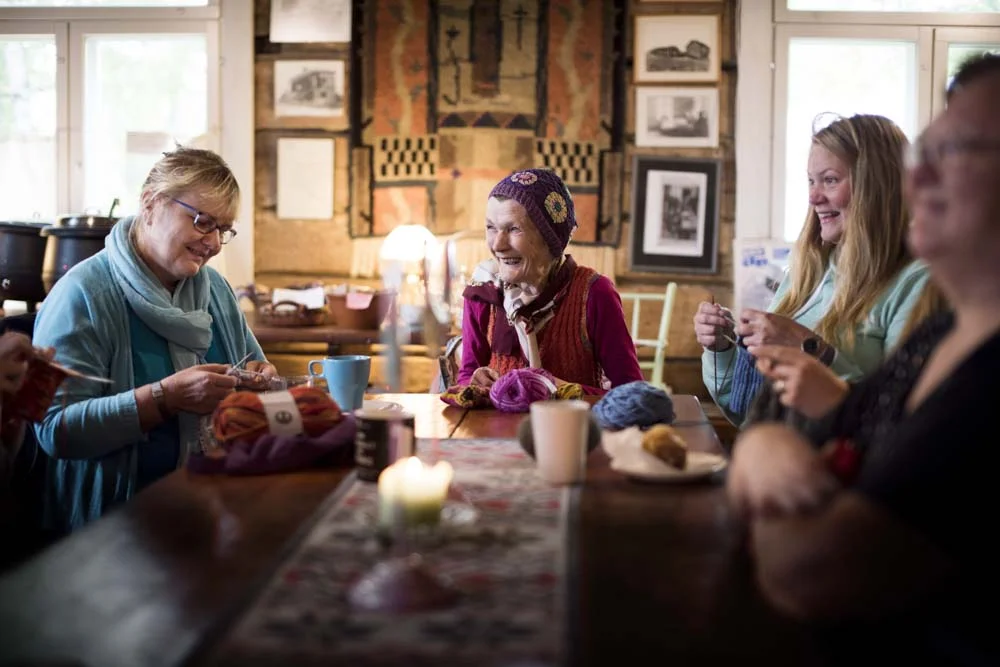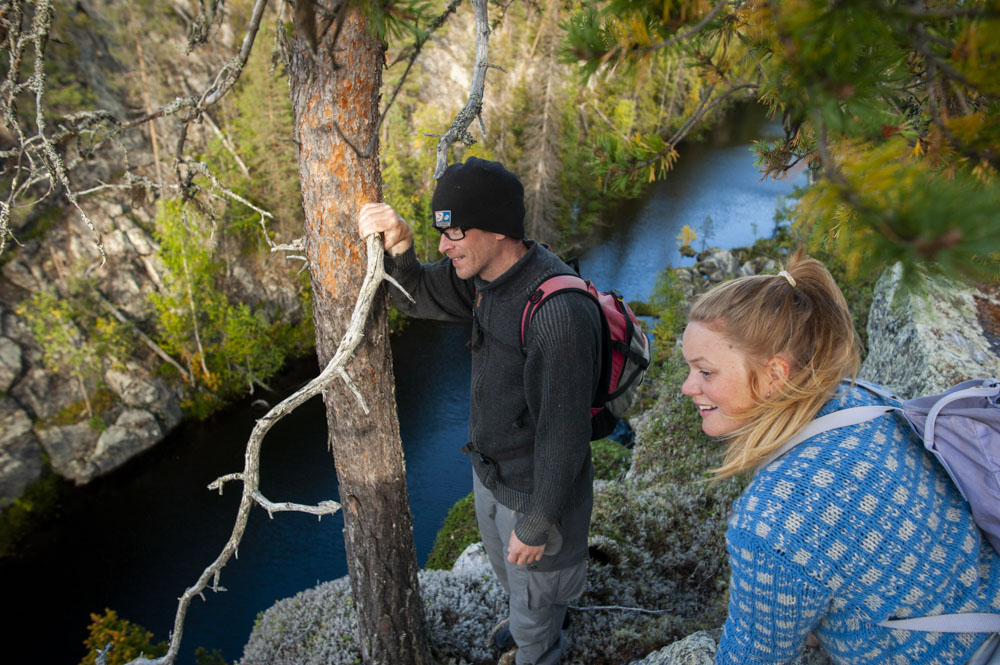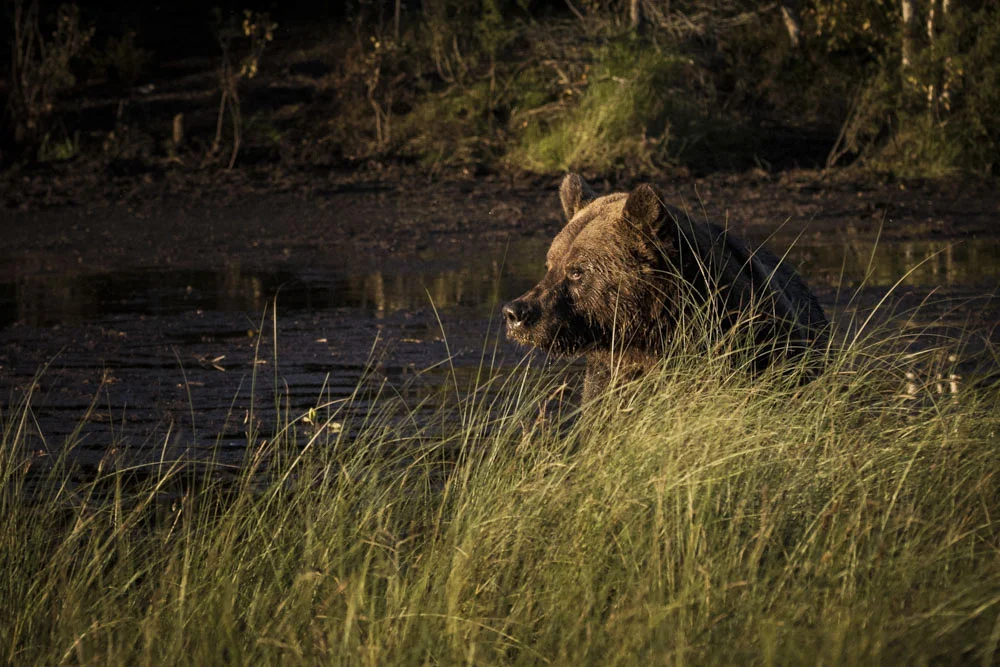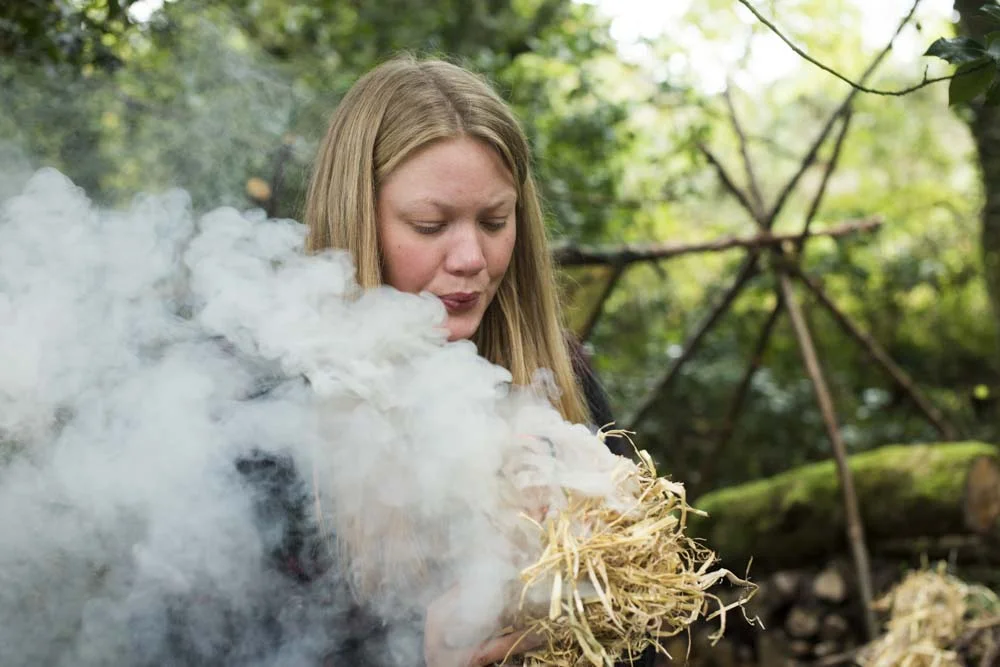Canoeing in Hossa National Park

What better way to explore the land of a thousand lakes, than by canoe & paddle? After some hectic days of travel, we had 3 days to immerse ourselves in Northern Finland's wilderness. Hossa National Park was given to the people of Finland as a present, celebrating the 100th year of their fine, forested country. With its many lakes, long trails, canyons and rock paintings, Hossa is a place of history and beautiful scenery. In this post you can read about historic Hossa, and the advantages of paddling in a National Park.
A Let's Go Slow film about canoeing in Hossa, Finland
This is one of the longest films we've made for Let's Go Slow. Let the lakes, lily pads, reindeer and our easy-going paddling inspire you to a similar journey! We hope you like it. Feel free to leave a comment!
This post was made possible with help from the Slow Adventure in the Northern Territories (SAINT) project. Read more about our fantastic new sponsor here! Although this post is sponsored, all opinions are our own.
Hossa: Accessible wilderness
Hossa National Park has something for everyone. Wheelchair accessible paths, marked hiking trails, canoeing routes and multiple shelters are just some of the features of this shiny new park.
This corner of Finland, with its prehistoric rock art, canyon lakes, clear water and Taiga forest, brings together the elements that make for an ideal wilderness journey. Since it's a National Park, paths, a visitor centre and equipment rental make it easier to access - but the feeling of its waterways and forest are similar to that of Canadian wilderness - or somewhere it would otherwise take several days of travel to get to.
Julma-Ölkky
Hiking in historic Hossa
When we arrived in Hossa we were met by Paula. She works for Metsähallitus - the national forest authority, and was there to introduce us to the area. Her childhood vacations were spent in the pine forest of Hossa and her affection for the place was more than overflowing. Paula took us on a gravel path that twisted and turned, with lovely wooden steps and narrow bridges. It was a sunny, warm autumn day, like an Indian summer and the flickering light through the tall, pine trunks made the forest look magical.
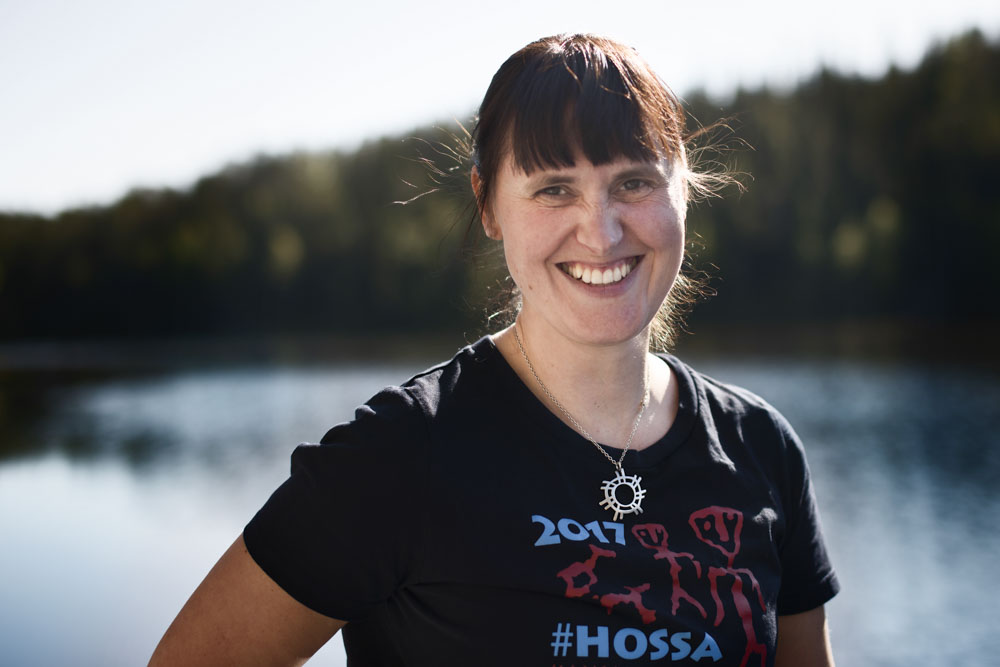

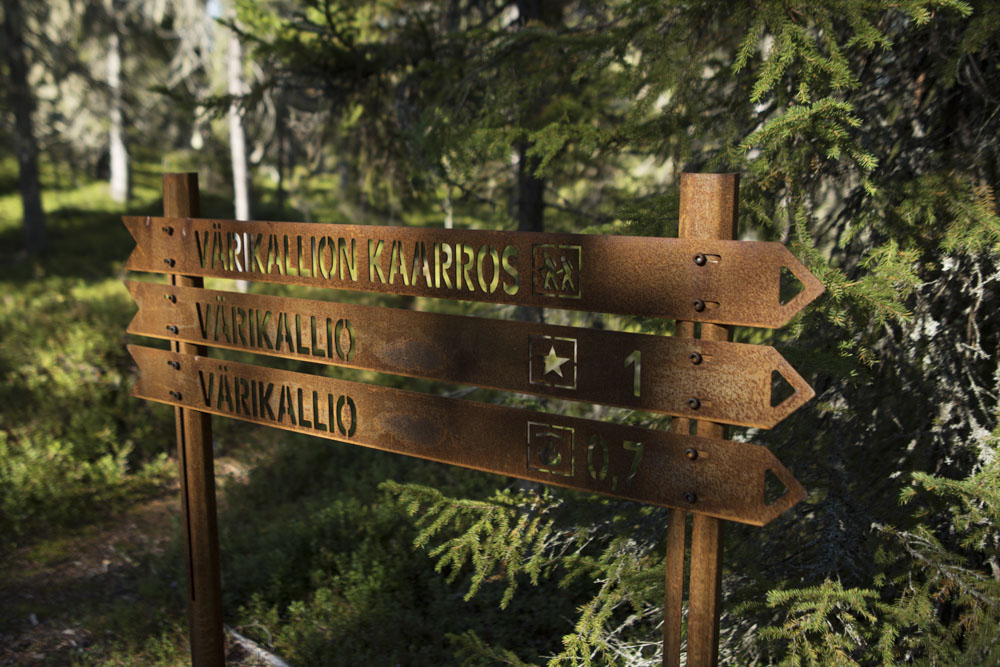
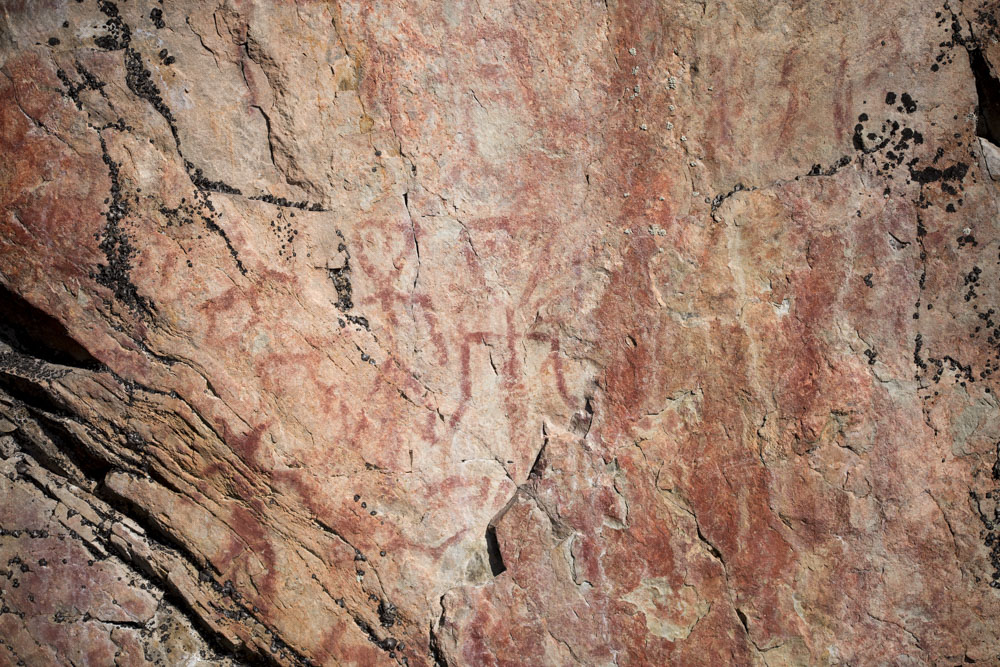
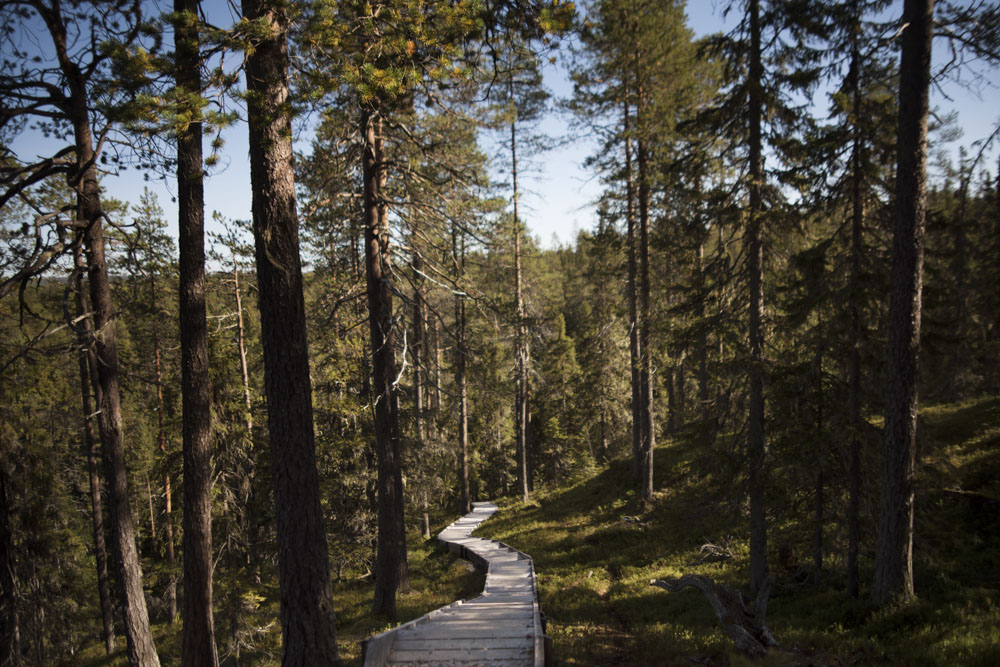
Hossa's Värikallio Rock Paintings
It's one of the largest rock paintings in Finland. We sat for about an hour, just enjoying the complex pattern of figures. The place it self is quite magical, with the sound of running water and the slight echo that comes from the space around a tall rock face. These rock paintings may not be in a gallery, but the space most certainly had a ceremonious atmosphere.
A Let's Go Slow film from Värikallio, with Paula Aspholm
Canoe touring in Hossa
After our hike to the Värikallio Rock Paintings, we packed our kit, hired a canoe and embarked the second stage of our Hossa slow adventure. The visitor centre equipped us with a canoe, safety equipment for class I & II rapids, map and paddles. Knowing they were reachable, being inside the park itself, was a relief should we need help.
Searching for stillness
Coming from Norway and Scotland, we would usually associate a National Park with busy trails, people doing a variety of fitness regimes and walking their dogs. We tend to prefer more remote, quieter areas - and so we were a little sceptical about how "in touch" with nature we'd really be here, but from the start of our paddle journey, we felt cut-off. To have these lakes and surroundings to ourselves was a complete surprise, and we relished in it. A lack of public roads, few visitors in autumn, and the park's shiny new status meant we were actually very alone.
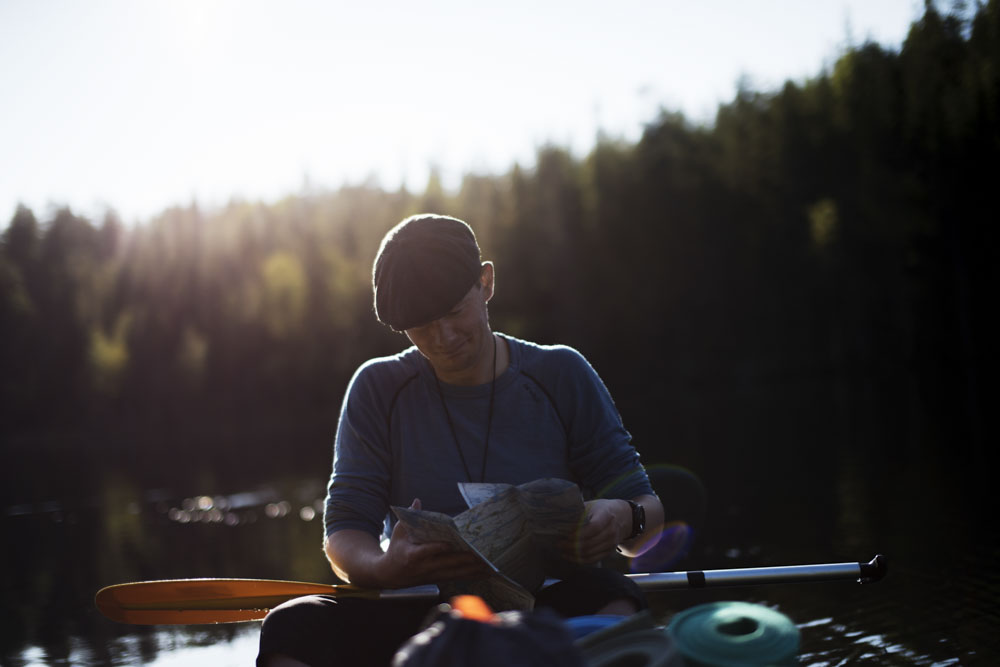

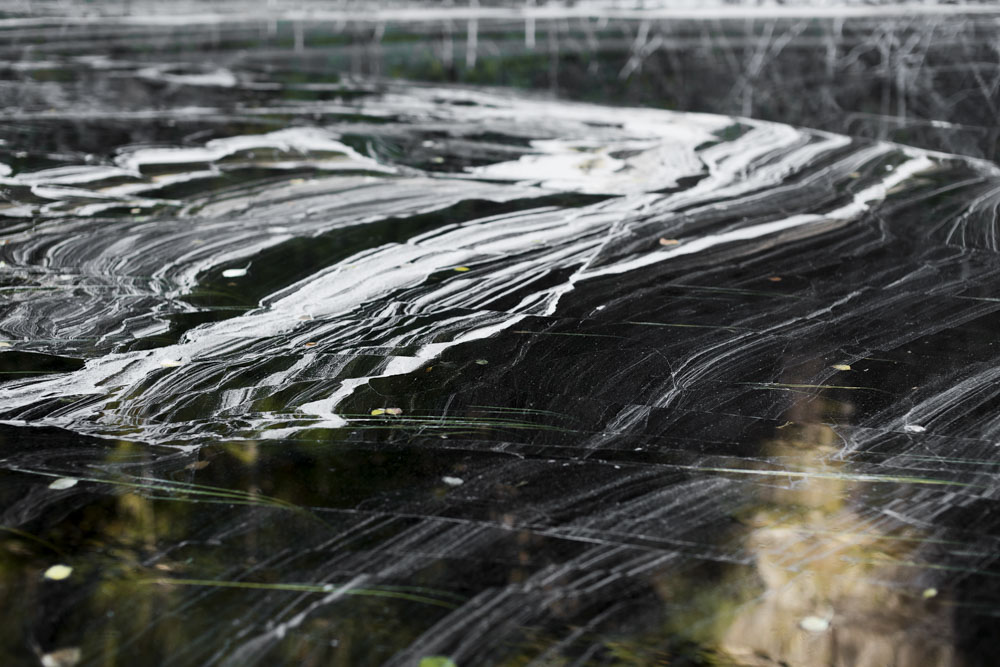
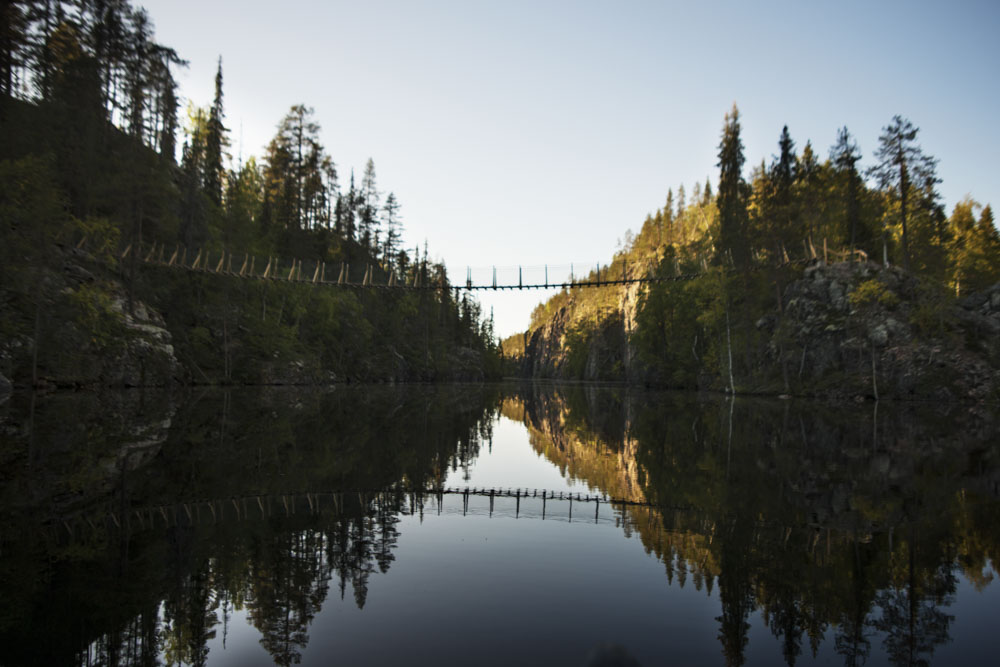
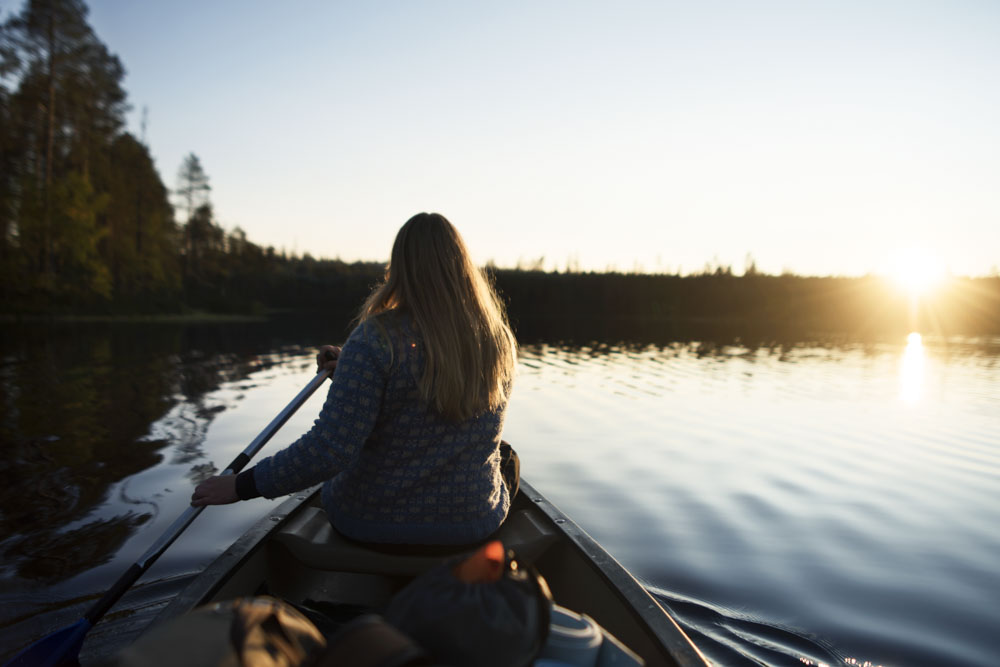
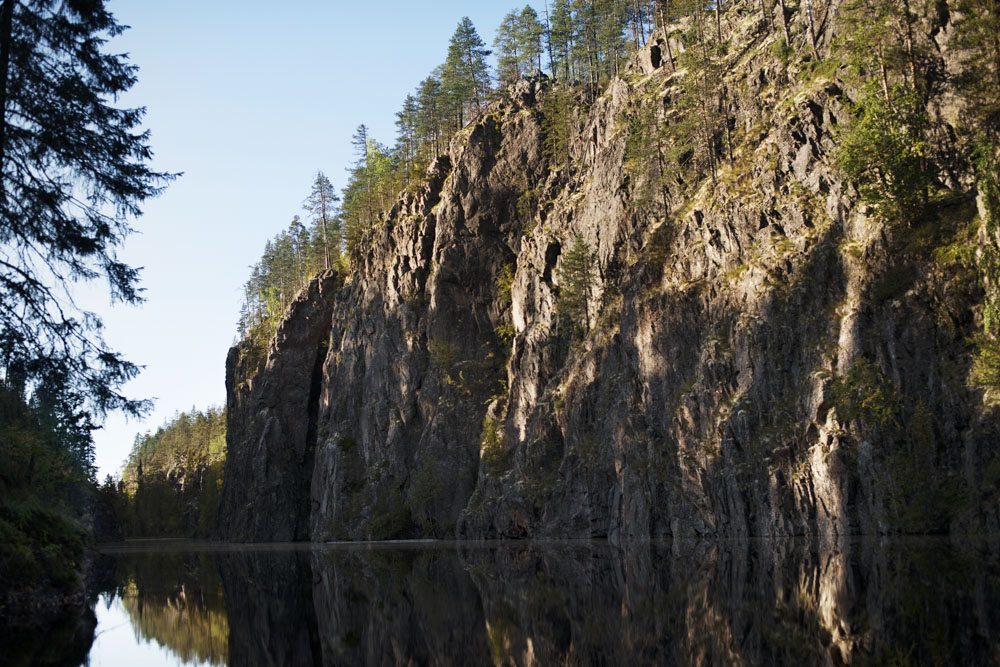
Somewhere to stay for the night
Cabins and lean-to shelters are quite common in wilderness areas in Norway, and Finland is no different. Our Hossa National Park map featured a few different shelters and huts, and we had a backup tent just in case. Having planned our route to include some shelters for staying the night and preparing dinner at, we set off.
Our first evening was by a lean-to shelter. We met with some locals enjoying the fresh autumn air. It was great to talk with people enjoying the same area - but traveling by another means. Something we noticed about this place was the variety of people. Both young and old chose to spend a night in the open fresh air. Nobody seamed to find age or fitness level a barrier for the outdoor life, but we wondered if some might feel envious when we pushed the canoe out in the morning, as they lifted up their heavy bags and started on the hiking trails.
Paddling in Hossa gave a wonderful balance of stillness from lakes, and excitement from running river rapids
Paddling fast & slow
Slow adventure doesn't seek adrenaline highs, but river paddling provides it anyway. Speeding down-river in a canoe is exhilarating. With lots of recent rainfall, we had to think on our feet, portaging around sections or low bridges where the water levels were too high.
Completely engaged in the moment for the whole day, then to be spat out of the last river section tired, hungry and ready for something to feel like home, we made it to Puukkojarvi - a stunning little wilderness cabin by the lake, with nobody in sight. We immediately hung up our towels there to claim it for the night!


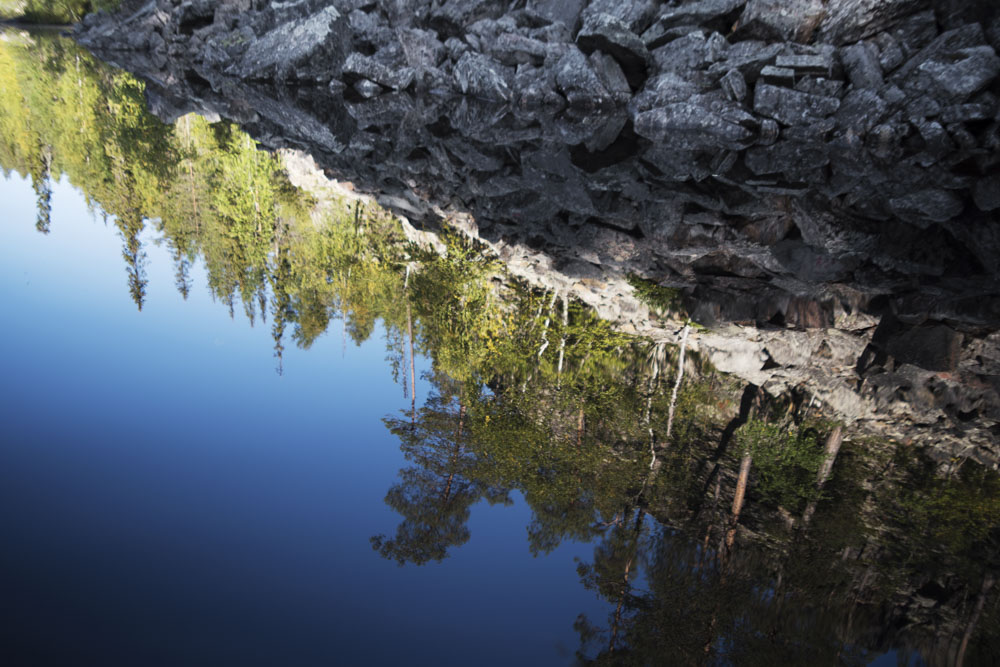
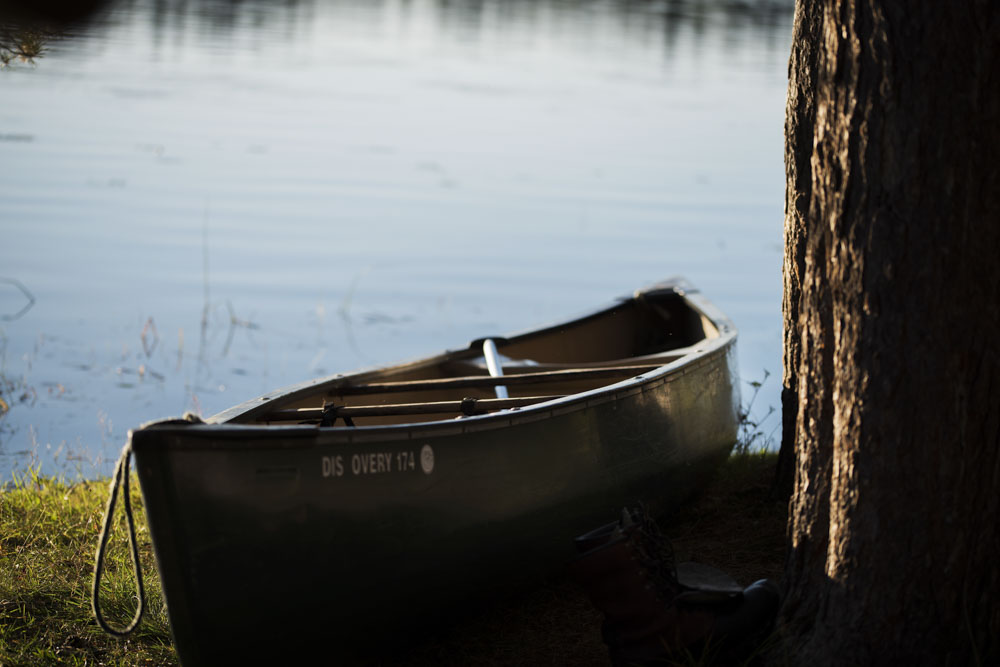
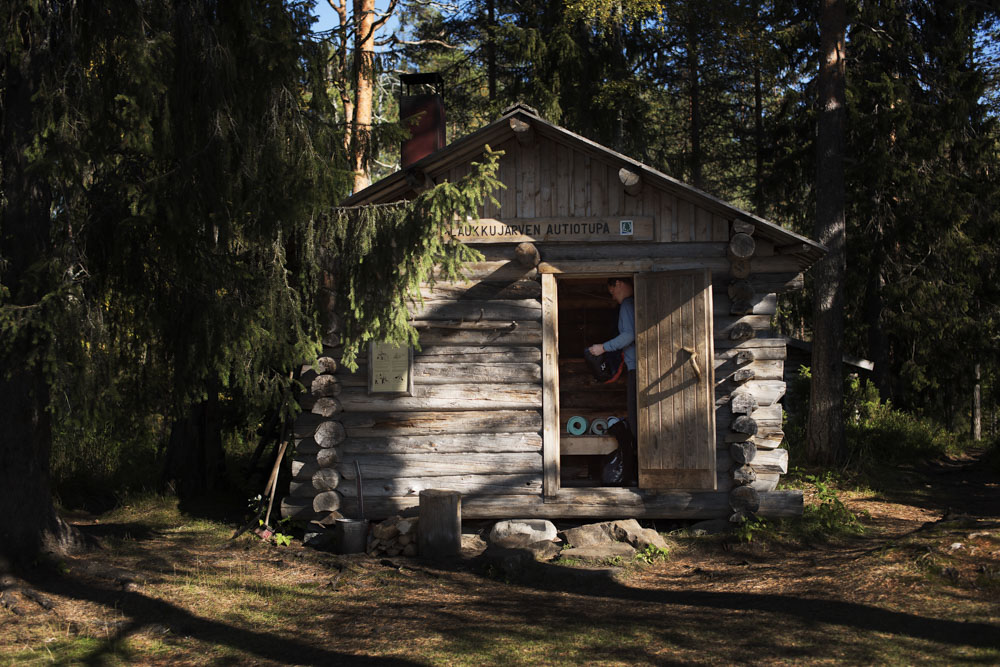
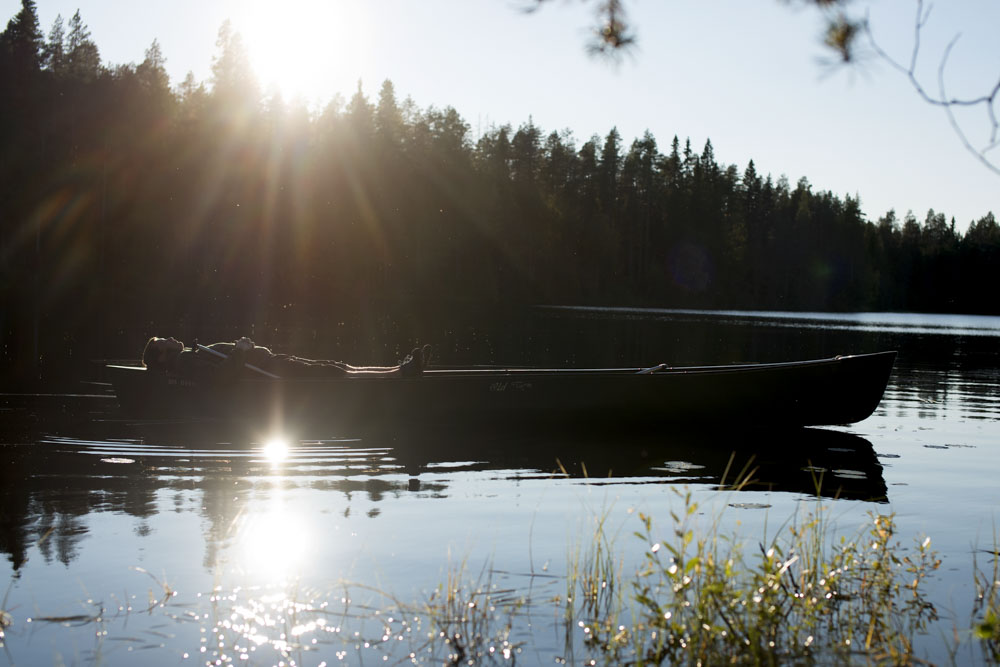
Slow animal encounters through being still
After unpacking we started preparing food. Chopping some vegetables for a stew, we both sat completely in our own world when a Reindeer mother and her calf suddenly walked out of the forest. They were maybe 10 meters from us when the calf saw the opportunity to suckle. The Finnish reindeer are "half tame" meaning they are very used to people, as the farms feed them though the winter. But for us this was a very different experience and something that could have only unfolded because of our own stillness.
We set off the next morning for a day of crossing lakes and making our way to the pick up point at the "Priest's Pine".
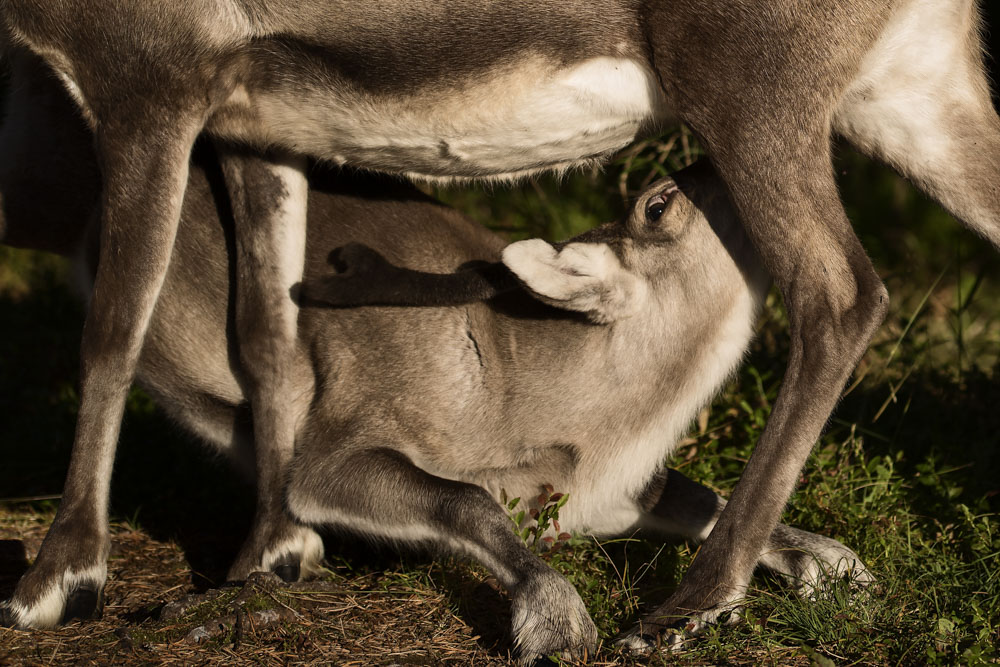

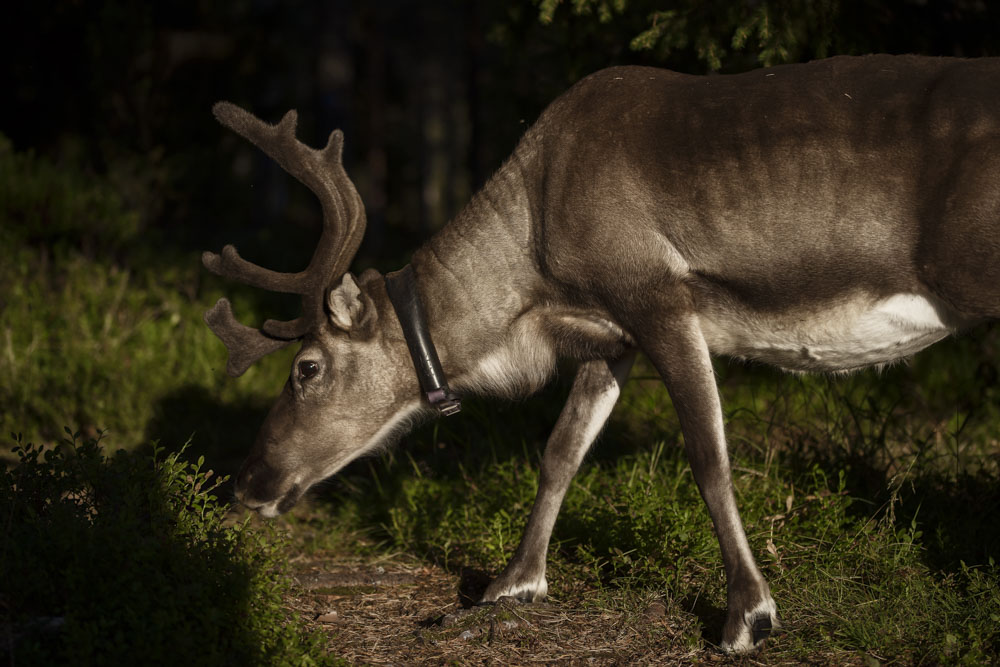
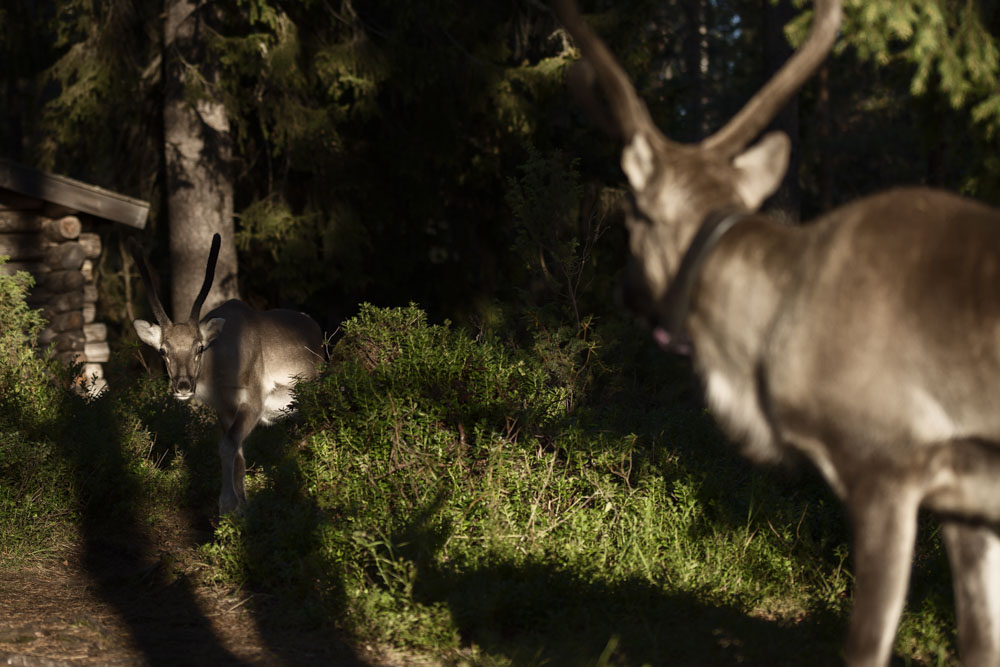
Modern times meet ancient times at the Priest's Pine
In agent times Hossa was mainly accessed though the waterways. There were no roads and people travelled by boat. The waterway network reached as far as the Gulf of Bothnia to the west, and across to the White Sea in the east.
As many people before us, we ended our journey at the shore of Keihäslampi Pond, where the Papinpetäjä Memorial Tree (Priest's Pine) stood waiting for us. The story of this tree is that when the priest traveled the area by boat, this tree marked a meeting point where he would visit the local people.
Superstition and local customs
A visit by the priest was of high importance and it often (like today) marked an important event, like a christening, confirmation or wedding, therefore many people carved the date in the Priest's Pine to honor a special time. But life in the Finnish forest was full of superstition, and some people, living the good life, were afraid their luck would turn. So, they would add imperfections to their carvings. In the pictures below you can clearly see the date: 1842 with the number 4 facing the wrong way, to protect them from bad luck.
Make your own Hossa adventure
This journey had so many components: Wildlife, lake canoeing, river canoeing, canyons, two different shelters, unique lake reflections and quality time alone. It has a lot more to offer based on interests and time of year. The National Park status makes it safer and more comfortable for most people to journey here.
While the Finnish wilderness can be challenging, with endless forest, wild weather and carnivores, in the arms of a National Park the wilderness is tamed a little, and you can connect with nature without worrying about shelter, firewood or easily getting lost.
Hossa provided a way for us to truly disconnect. Being able to choose a route suited to our experience helped us immerse in it. The essence of slow adventure is being lost in the doing of it, it's a slow gear that lets us bury our attention into what we're doing. Below is more info on doing it for yourself.
Good to know about the Hossa Värikallio Rock Paintings:
- Värikallio is accessible all year round and is free-of-charge.
- Themed guiding for groups is available, subject to a fee.
- In summer there is a trail leading to the paintings, and an observation platform has been built in front of the rock art.
- The walking bridge with a platform means you can see the rock paintings quite closely.
- In winter there is a ski trail to the cliff.
More local information about Hossa National Park:
Info about Hossa National Park: http://www.nationalparks.fi/en/hossa
Hossa Visitor Centre: http://www.nationalparks.fi/en/hossavisitorcentre
Contact Experience KL Oy, based at the visitor centre, for information about renting boats, canoes, kayaks as well as hiking and fishing equipment. Phone: +358 (0)50 384 4692.
The people at the visitor centre are very knowledgeable and they are more than willing to help you get the most out of your stay, so don't hesitate sending them an email or calling. E-mail: hossa@metsa.fi
Info about the Hossa Värikallio Rock Paintings: http://www.nationalparks.fi/en/varikallio
We'd like to thank SAINT, the Northern Periphery and Arctic Programme, and the European Union for their support in making this post happen!
The SAINT project: www.saintproject.eu







